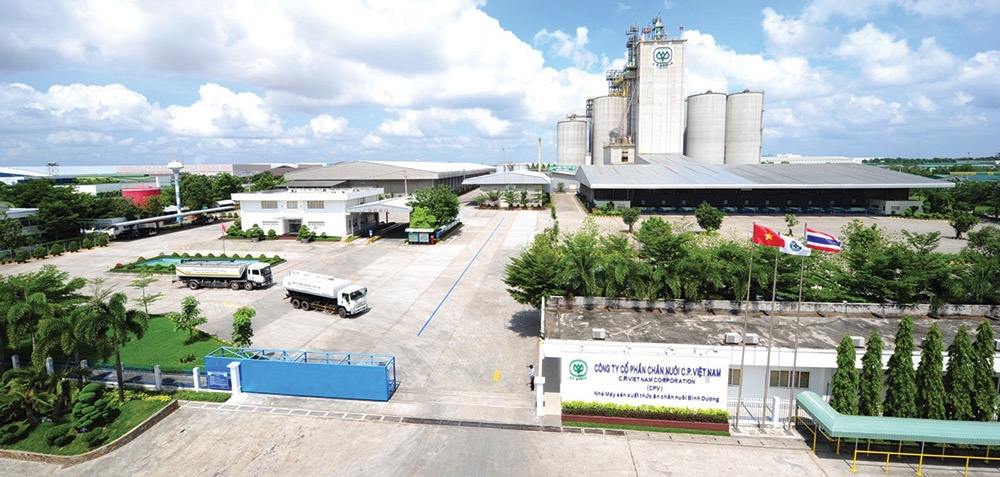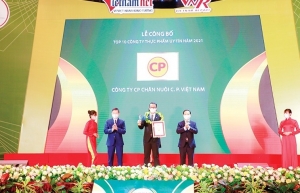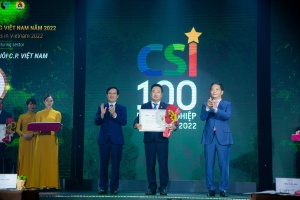Husbandry groups build for future
According to the Department of Livestock Husbandry, the wave of investment in slaughtering and processing has been strong and expected to grow rapidly in the next few years. Small-sized livestock and poultry slaughterhouses are increasingly falling by the wayside, while centralised slaughterhouses are increasing in both quantity and scale.
In 2022, the country had over 450 centralised livestock and poultry slaughterhouses and more than 22,700 small ones. The proportion of centrally slaughtered cattle and poultry is estimated at 25-30 per cent, and about 10-12 per cent of them are industrial slaughter. However, the actual capacity at industrial slaughterhouses is still low compared to the design capacity, from 30 to around 65 per cent.
Processing is currently the most profitable step in the livestock value chain. The country currently has just over 100 industrial-scale meat, egg, and milk processing facilities for export and domestic consumption, meeting the processing needs of over 1.3 million tonnes of meat, over 100 million eggs, and millions of litres of fresh milk every year.
For meat processing, there are 67 meat processing factories of all kinds with capacity of over 1.3 million tonnes per year, accounting for about 20-22 per cent of total domestic meat production.
 |
Leading the market, Thai-backed C.P. Vietnam (CPV) is one of the main players managing the feed-farm-food model with a large amount of investment alongside it. In late 2020, the company inaugurated the CPV Food Binh Phuoc complex, the largest chicken breeding and processing project for exports in Vietnam and Southeast Asia. The venture boasted initial investment of $250 million and an annual capacity of 100 million broilers.
CPV Food Binh Phuoc provides high-quality and safe chicken to domestic consumers and for export to Japan (45 per cent), Europe (35 per cent), Asia (10 per cent), and the Middle East (10 per cent). The complex is expected to bring in $100 million per year in the first stage and $200 million in the second.
CPV president Montri Suwanposri said, “We will contribute to enabling Vietnam to become a food processing country that meets international standards and increases exports, putting it on the map for branded poultry exporters.”
The entire supply chain at CPV Food Binh Phuoc is 100 per cent traceable from ingredients to processed products, and is equipped with synchronous solutions to meet the environment and animal welfare requirements of advanced importing countries. The complex applies advanced technology, safe production, and first-class processing methods.
Meanwhile, the application of AI and big data in management and production enhances productivity and the quality of products, improves competitiveness, and promotes sustainability. “We have already applied the most advanced technologies in the world. There are technologies that we are applying for, for the very first time in its global operations, at Binh Phuoc to improve productivity, product quality, and competitiveness while keeping prices reasonable,” Suwanposri added.
To date, CPV has operated nine slaughtering and processing factories across the country, in Hanoi, Ho Chi Minh City, Binh Phuoc, Binh Dinh, Hue, Ben Tre, and Dong Nai. In July, its meat processing factory in Hanoi was honoured among the top 10 green friendly factories by the Vietnam Economic and Trade Association of Information and Consulting.
The meat producer has pledged to comply with legal provisions on environmental protection, reasonable energy use, circular economic models, carbon emissions reductions, and balancing ecosystems by planting 1.5 million trees across Vietnam between 2021 and 2025.
Following CPV, some modern slaughtering and processing factories of well-known livestock companies have already been inaugurated or started the cooperation. In May, Japfa Comfeed Vietnam inaugurated its Binh Phuoc feed mill and slaughterhouse.
Phase 1 of the project boasts capacity of 240,000 tonnes per year for a total investment of nearly $17 million, while the capacity will increase to 480,000 tonnes per year in its second phase.
The same amount was also poured into the construction of a slaughterhouse, boasting a capacity of 60,000 chickens per day and is equipped with cutting-edge infrastructure and imported from the EU. The facility meets GMP, ISO, and other global standards, ensuring that customers receive only the highest-quality products.
Elsewhere, in June, De Heus Group and local partner Hung Nhon Group signed a MoU on studying and researching investment in high-tech agricultural projects in Tay Ninh province, with a total investment of about $105 million. This includes a high-tech livestock complex and agricultural farming area, a slaughterhouse and livestock product processing factory, animal feed raw material area, and breeding research centre.
 | Responsible actions earn C.P. Vietnam prime accolades Thailand’s C.P. Vietnam has been named the most reputable frozen food company for the second year in a row and has hit five consecutive years of being named in the top 10 for food reputation in the country. |
 | C.P. Vietnam named top sustainable group for third time Thailand’s C.P. Vietnam (CPV) was named among the top 10 most sustainable manufacturing companies in the country at Sustainable Companies Vietnam 2022. |
What the stars mean:
★ Poor ★ ★ Promising ★★★ Good ★★★★ Very good ★★★★★ Exceptional
Related Contents
Latest News
More News
- Human-centred governance seen as key to AI development (December 19, 2025 | 18:19)
- Top 10 notable events of Vietnam’s industry and trade sector in 2025 (December 19, 2025 | 14:00)
- Tungsten surges to 12-year high as world enters a new 'black gold' race (December 18, 2025 | 17:27)
- Vietnam’s coffee exports set new record despite price pressures (December 18, 2025 | 17:13)
- Garment and textile sector seeks new growth after volatile year (December 18, 2025 | 17:01)
- VinSpeed and Siemens strengthen cooperation for high-speed rail development (December 18, 2025 | 16:53)
- High-tech adoption for TH true MILK (December 18, 2025 | 13:39)
- Takeda supports health resilience amid climate change challenges (December 18, 2025 | 12:39)
- Mondelez Kinh Do - a chapter of purpose-led leadership in Vietnam (December 18, 2025 | 09:44)
- VNPAY services receive the highest-level PCI DSS international security certificates for six consecutive years (December 17, 2025 | 23:47)

 Tag:
Tag:





















 Mobile Version
Mobile Version